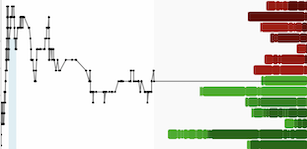The recent tensions sparked by China’s restrictions on rare earth exports highlight a critical technical and strategic issue we addressed extensively in our book, Mining is Dead. Long Live Geopolitical Mining. Western countries face deep vulnerabilities regarding essential minerals. These vulnerabilities are not merely logistical or economic, they reflect a structural flaw in how the mining industry is perceived and regulated.
From an engineering perspective, any industrial system operates most efficiently when its strategic objectives are clear, coordinated, and well-communicated. Western mining has progressively lost clarity in its strategic narrative. The nearly exclusive focus on ESG metrics, necessary but inherently limited, has increasingly displaced the industry’s foundational narrative of innovation, progress, and territorial development.
Consider this in technical terms, regulatory processes (Environmental Impact Assessments, community consultations, successive approvals) are not merely administrative procedures. Originally, these processes were designed to optimize industrial systems toward technical, environmental, and social objectives. However, when these technical validations multiply without adding new tangible value, when they are repeatedly conducted primarily for reassurance rather than genuine improvement, the engineering of the system fails. We then face redundancy that is inefficient and technically unproductive.
This discrepancy does not arise from lower environmental or social standards, but rather from the capacity to focus regulatory processes on tangible outcomes, rather than repetitive or symbolic validations.
In practical terms, the critical question is clear:
Has the West become so focused on demonstrating ESG compliance that it has lost sight of the operational, technical, and strategic efficiency of mining itself?
From an engineering viewpoint, the solution is straightforward, urgently regain balance by shifting from ESG metrics alone toward what we call “Rational Sustainability.”
Rational Sustainability means retaining full commitment to environmental, social, and governance standards but within a framework that’s logically consistent, operationally practical, and strategically coherent. It’s sustainability guided by clear engineering principles, minimizing redundancy, optimizing resources, and enhancing overall system efficiency.
Achieving Rational Sustainability requires:
Simplifying regulatory processes without compromising genuine technical, environmental, and community standards.
Centralizing strategic decision-making within specialized institutions capable of efficiently coordinating permitting, technical assessments, and community engagement.
Reintegrating mining’s strategic narrative into industrial and energy policies, clearly highlighting its technological, economic, and social contributions.
When mining loses clarity in its strategic narrative, it becomes a slow, bureaucratic, inefficient industrial system. It ceases not only to inspire but to function effectively.
From an engineering perspective, a system losing efficiency due to redundant validations is fundamentally poorly designed. Western mining, currently trapped within ESG metrics disconnected from a clear strategic vision, urgently needs to redesign its operational structure around Rational Sustainability to regain agility, efficiency, and, most importantly, strategic purpose.
This challenge is not theoretical, it’s fundamentally technical and strategic. Either we embrace Rational Sustainability, recovering operational clarity, or we permanently concede our strategic position to competitors who fully understand how to optimize complex industrial systems.
(This article is based on ideas developed together with Marta Rivera in our book, “Mining is Dead: Long Live Geopolitical Mining.”)



